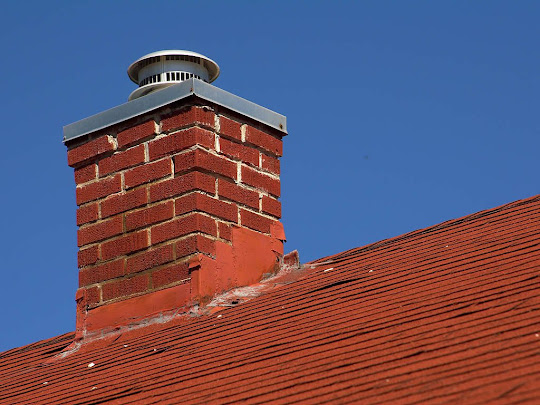A Guide to Causes of Spalling Chimney Bricks
Spalling is a usual issue in chimney brickwork that is usually caused by the porosity of bricks, which permits moisture infiltration. Bricks are sturdy, but they also have a porous property that makes them perfect for building chimneys and allowing smoke to escape. However, cracks and fissures emerge when there is an excessive absorption of moisture, which is followed by freezing and expansion in cold temperatures. The quality of the brickwork, the age of the house, and the surroundings all affect the level of severity of the spalling. Notably, chimneys and walls constructed from recycled bricks display higher susceptibility, as age-related fissures and incompatibility with current mortars contribute to their vulnerability.
What are the most common causes of Chimney Brick Spalling?
There are several causes of spalling bricks. Some of them are listed as under:
Freeze-Thaw Cycles
Chimney masonry is significantly threatened by freeze-thaw cycles. When water seeps into the porous material and then freezes, it stretches and forces on the masonry. This expansion causes fractures to appear, which ultimately lead to spalling, or the chipping or breaking off of masonry surfaces. The damage is progressively made deeper by this recurring cycle of freezing and thawing, which affects the chimney’s structural integrity. Proper waterproofing and routine inspections are vital preventive measures that help lessen the effects of freeze-thaw-induced spalling.
Water Penetration
One of the most common causes of chimney spalling is water infiltration. Rain or snow can start a cycle of degradation when it gets inside the chimney through existing cracks. When the absorbed liquid freezes during colder months, it can cause expansion and cracks as an outcome of structural damage. The masonry of the fireplace weakens as a result of the rapid spalling caused by the procedure repeating. To minimize the possibility of spalling and stop water intrusion, it is crucial to conduct routine chimney inspections and make timely repairs to seal any openings.
Poor Construction
Chimney lifespan is directly related to the calibre of construction. Premature deterioration becomes a serious problem when poor building materials or techniques are used. Inadequate construction methods can result in structural problems, and weak materials may break down under the effects of the environment. These defects show up as spalling, cracks, and weakened chimney integrity over time. Selecting high-quality supplies and making sure that correct building procedures are followed during the first phase of construction are essential to protecting chimneys from early deterioration and reducing the likelihood of later structural problems.
Lack of Waterproofing
One major cause of water damage to chimneys is often inadequate waterproofing. Rain or snow seeps through the masonry in the absence of a reliable barrier, setting off a series of problems. Freeze-thaw cycles brought on by the absorbed moisture can hasten spalling and jeopardize structural integrity. Proper waterproofing reduces the chance of damage by acting as a screen against water entry using sealants or coatings. To safeguard chimneys against the damaging effects of moisture incursion, preventative measures must be put in place, such as routine inspections and prompt reapplication of waterproofing chemicals.
Creosote Buildup
A recurring hazard to chimneys is incomplete combustion, which leads to creosote accumulation. This tar-like, sticky material develops inside the chimney and leads to several problems, including spalling. Creosote insulating the flue as it accumulates prevents adequate airflow. This makes it more difficult for combustion byproducts to escape, trapping moisture and other harmful substances inside the chimney. This trapped moisture eventually causes crumbling, which weakens the stonework. Proper burning techniques, professional cleanings, and routine chimney inspections are essential for avoiding creosote buildup and the ensuing risk of spalling.
Extreme Temperature
Sharp temperature variations are a major danger to chimney masonry. The constant expansion in hot weather and contraction in cold weather causes stress, which progressively erodes the structure. The integrity of the chimney may eventually be compromised by the emergence of cracks as a result of this heat stress. For the chimney’s masonry to remain sturdy and to be less impacted by temperature extremes, proper material selection and insulation are essential.
Regular Maintainence
Regular chimney care is ignored, which might lead to possible spalling problems. Without regular maintenance, structural weaknesses could go undetected and allow intrusion of water or other harmful substances to establish themselves. Complete care, which includes regular inspections and prompt repairs, prevents spalling from advancing. By taking preventive action, flaws are dealt with before they get worse, protecting the chimney’s structural integrity. Homeowners may easily avoid or minimize the risk of spalling and assure the long-term integrity of their chimney by emphasizing routine repair.
.jpg)
.jpg)
.jpg)

Comments
Post a Comment